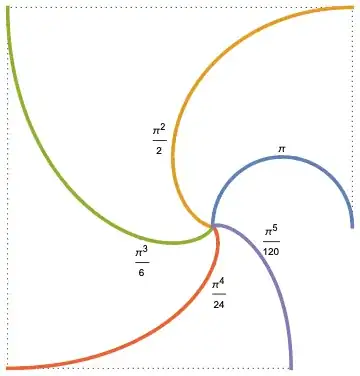If you're looking for examples of $\pi^2$ occurring naturally, you should look at some of the common PDEs. The derivation of their solutions and solutions themselves lead to occurrences of $\pi^2$. I'll provide some examples, but I'm going to keep everything a bit loose to make it more digestible.
First, take the heat equation on a 1-D rod of length $L$ with no heat on the ends: $$\begin{cases}
\partial_t u=\kappa\partial_x^2 u\\
u(x,0)=f(x)\\
u(0,t)=u(L,t)=0
\end{cases}$$ If you assume a solution of the form $u(x,t)=X(x)T(t),$ then you will arrive at two ODEs to solve: $$\frac{d^2X}{dx^2}=-\lambda X$$ and $$\frac{dT}{dt}=-\kappa\lambda T,$$ with $X(0)=0$ and $X(L)=0$. The former is an eigenvalue problem with given boundary data, and solving this eigenvalue problem gives you $\pi^2$ presence, as we find the eigenvalues to be $$\lambda_n=\left(\frac{n\pi }{L}\right)^2,$$ and $$X_n(x)=\sin\left(\frac{n\pi x}{L}\right),$$ for $n=1,2,\cdots.$ Solving the $T$ equation gives you $$T(t)=ce^{-\kappa\lambda_n t},$$ and in the end, you get the solution $$u(x,t)=\sum\limits_{n=1}^\infty B_n\sin \left(\frac{n\pi x}{L}\right) e^{-\kappa\frac{n^2\pi^2}{L^2} t},$$ with $$B_n=\frac{2}{L}\int\limits_0^L f(x)\sin\left(\frac{n\pi x}{L}\right)\, dx.$$ This even has $\pi^2$ in the solution itself. Notice that, amongst other things, $\pi^2$ pops up in the decay rate of the solution to its steady state.
If we look at the wave equation $$\partial_t^2u=c^2\partial_x^2 u,$$ instead, then you will still get the same eigenvalues and eigenfunctions (since they are all eigenvalues/eigenfunctions of $\partial_x^2$). If we add in the additional initial condition $\partial_t u(x,0)=g(x),$ then we instead get the final solution $$u(x,t)=\sum\limits_{n=1}^\infty\left(A_n\cos\left(\frac{n\pi ct}{L}\right)+B_n\sin \left(\frac{n\pi ct}{L}\right)\right) \sin \left(\frac{n\pi x}{L}\right), $$ where $A_n$ is the same and $$B_n=\frac{2}{n\pi c}\int\limits_0^Lg(x)\sin \left(\frac{n\pi x}{L}\right)\, dx.$$ Here, the eigenvalues are related to the frequencies of the waves, so they have a nice physical interpretation.
